Textile Waste =clothes that are worn out, dirty, pilled, have a bad smell, or are made of sensitive materials such as underwear, swimwear and similar items.
Rethink textiles
Millions of tons of textile waste are discarded each year, much of which ends up in landfills or is incinerated—contributing to severe environmental harm. This thesis investigates how unsellable second-hand textiles can be repurposed into new, usable products and materials through small-scale, accessible methods suitable for home use. The project explores simple, sustainable techniques that allow individuals to creatively reuse textile waste without the need for industrial processes. The outcome is a moldable, water-soluble material made from shredded textiles and homemade glue. This material can be applied in various ways and reshaped using only water, enhancing its potential for reuse. To share the methods and findings, a website and Instagram account have been created, offering step-by-step guides and inspirational examples. The aim is to encourage designers, creatives, and curious individuals to explore circular material practices and contribute to a more sustainable approach to managing textile waste.
Background & Problem Statement
Each year, millions of tons of textiles are discarded, much of which ends up in landfills or is incinerated—causing long-term environmental harm. Synthetic fibers can take hundreds of years to break down, and fast fashion accelerates consumption, leading to even more waste.
Although second-hand systems exist, not all donated garments can be resold. Items that are worn out, stained, or considered sensitive, like underwear or swimwear, are often discarded. This project takes its starting point here, exploring what can be done with unsellable textile waste.
The aim was to investigate how these discarded textiles could be repurposed into usable materials and products using simple, small-scale methods suitable for a home setting. The goal is to shift the perspective on textile waste—from something to throw away, to something full of creative potential.
Methods – Repurpose-Driven Design
This project followed a repurpose-driven design approach, where material exploration guided the process. Instead of starting with a specific product idea, the focus was placed on understanding and experimenting with unsellable textile waste. The goal was to discover what the material could become—before deciding what it should be.
Through an iterative process of testing, adjusting, and rethinking, discarded textiles were transformed using homemade glue recipes made from everyday ingredients. This hands-on exploration enabled the development of a moldable, water-soluble material with circular potential.
The method was supported by the Double Diamond framework and enriched through mentorship from The Loop Factory, as well as input from designers and creatives interested in sustainable practices.
Result – Textile Waste Reimagined
The final result is a versatile, moldable material made from shredded textiles and homemade glue. It can be shaped wet, molded into forms, or applied as a decorative surface. Once dry, it is solid and strong—but can be softened and reshaped with water. This makes it suitable for creative reuse over time.
Examples include a flower pot made from a lonely football sock, and a lamp covered with two damaged sweaters. ivé also used the material to create pinboards, boxes and home accessories.
To make the method accessible, step-by-step guides and videos were shared on a website and Instagram (@tex2more_). These platforms are designed to inspire designers, creatives, and curious individuals to explore textile waste in new, hands-on ways.
The project encourages a broader view of material value and demonstrates that creative reuse doesn't require advanced skills or equipment. Through accessible methods and inspiring examples, it empowers others to explore textile waste as a resource in circular design.
UID25 | Isabelle Kemi – Grad project presentation
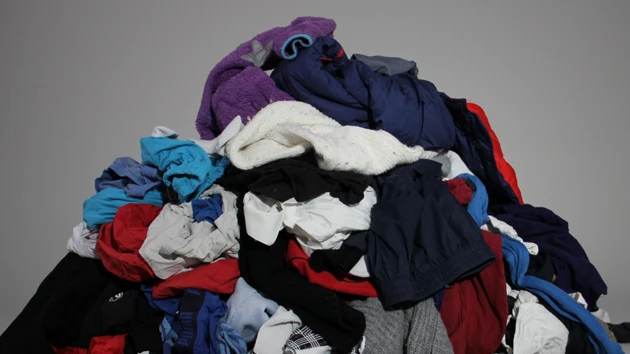
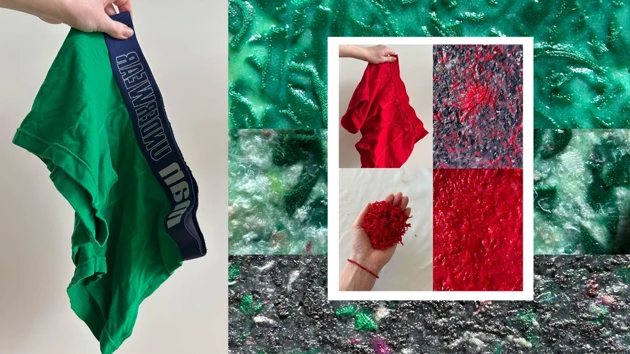
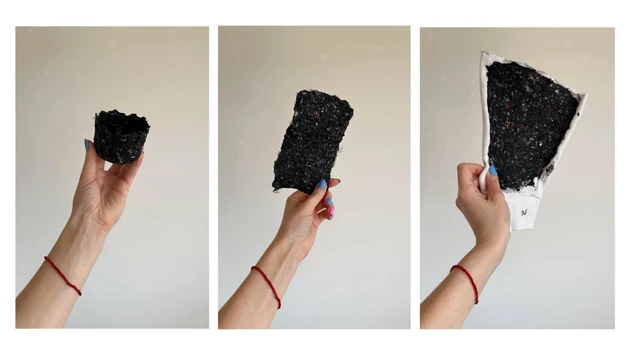
Material experiments: Testing different homemade glue recipes with shredded textiles.
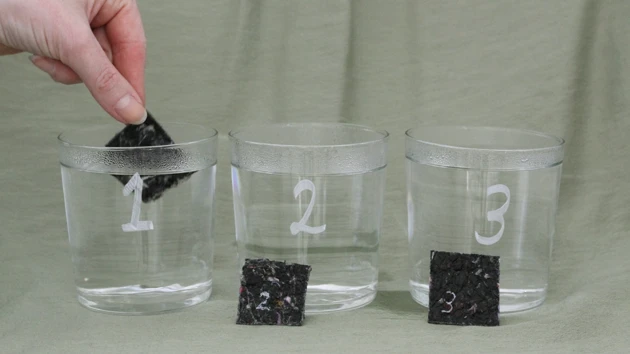
Water-soluble material: The developed material can dissolve back into shredded textiles, strengthening its circular potential.
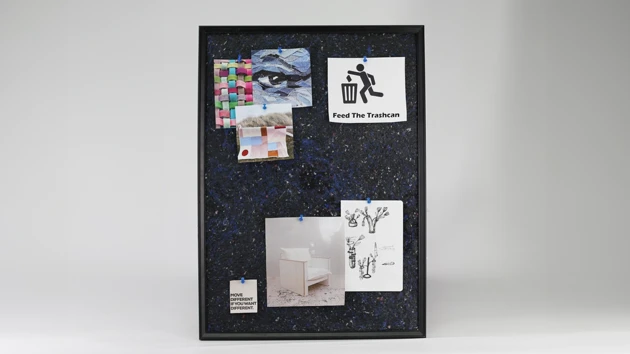
Multiple applications: The material can be used in various ways.
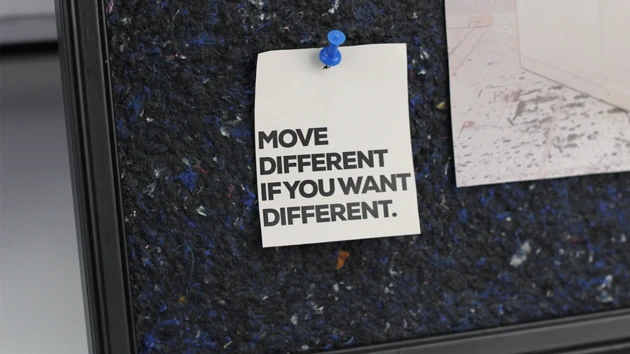
As a pinboard: A simple and functional use of the material.
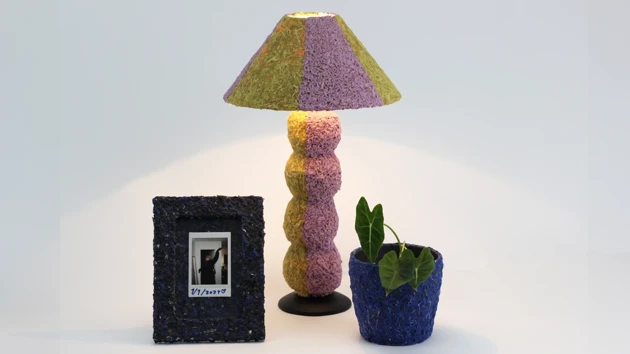
As a decorative surface: The pot is made from a single shredded football sock, and the lamp from two broken sweaters.
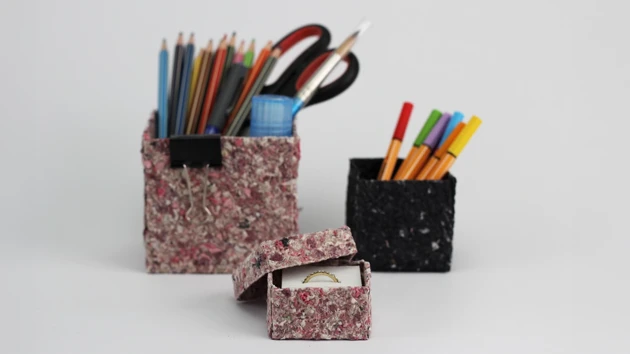
Formed with water: The material can be cut and reshaped using only water.
Want to try it yourself? Watch the step-by-step video to learn the method and how to make your own box.
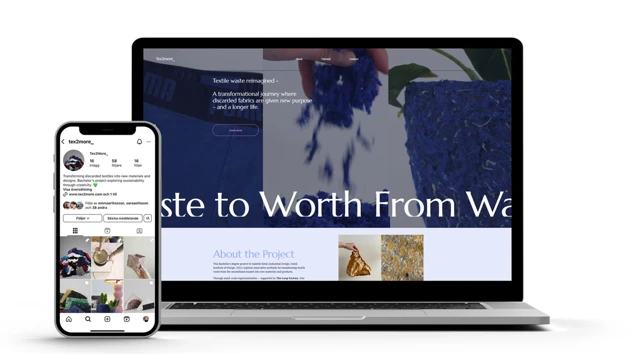
More info: Visit Tex2more.com and follow @tex2more_ on Instagram for updates and tutorials.













